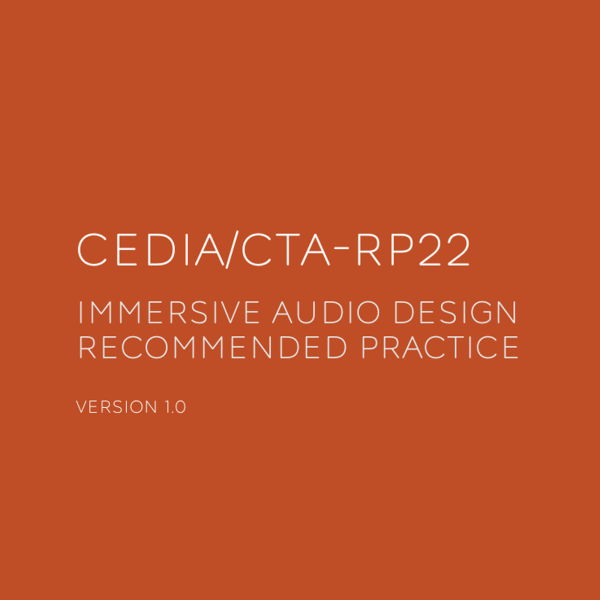Achieving deep, punchy bass in a home theatre or immersive audio system isn’t just about adding subwoofers—it’s about optimizing their placement and the room itself. Chapter 7 of the CEDIA/CTA-RP22 Immersive Audio Design recommended practice covers key strategies for taming room modes and ensuring smooth bass response across all seating positions.
Here’s what you need to know.
1. The Challenge: Room Modes & Standing Waves
Low-frequency sound waves (20–80 Hz) are long (up to 17 meters / 56 feet!) and interact strongly with room boundaries, creating standing waves(or room modes). These cause:
– Bass peaks & nulls – Some seats get overpowering bass, while others hear almost nothing.
– Inconsistent response – A 20 dB variation between seats is common in untreated rooms.
How Room Modes Work?
– Axial modes (strongest) occur between two parallel walls (front/back, left/right, floor/ceiling).
– 1st-order modes have the deepest nulls, while higher-order modes create more complex patterns.
Example: In a 5m (16.4 ft) long room, the 1st axial mode is at 34 Hz (speed of sound ÷ 2 × room length).
2. Room Optimization Approaches
To fix uneven bass, two main strategies are used:
A. Dimensional Optimization (Room Proportions)
If possible, design the room with dimensions that ‘spread out’ modal frequencies.
– Avoid integer ratios (e.g., 1:1 or 2:1 between length, width, height).
– Ideal ratios fall between 1 : 1.15–1.45 : (any) (e.g., 5m × 6m × 2.8m).
Note: This is most effective during construction but can’t fix existing rooms alone.
B. Positional Optimization (Subwoofer Placement)
The best way to smooth bass response is by using multiple subwoofers in strategic locations.
Best Subwoofer Arrangements (Ranked)
| Configuration| Description| Effectiveness |
a) Mid-room (free-field) | Subwoofers away from walls (rarely practical) | ★★★★★ (Best)
b) Mid-wall (front & back) | Subwoofers centred on front and back walls | ★★★★☆
c) Quarter-point (side walls) | Subs at 25% and 75% of room width | ★★★★☆
(d) Front corners + mid-wall rear | Combines corner loading and mid-wall placement | ★★★☆☆
(e) All four corners | Maximum output but less even response | ★★☆☆☆
Key Rule: Use ‘identical subwoofers’, same polarity, and same gain settings.
3. Advanced Optimization Techniques
A. Bass Management
– Redirect low frequencies from main speakers to subwoofers (typically below **80–120 Hz**).
– Ensures smoother bass and reduces strain on smaller speakers.
B. Double Bass Array (DBA)
– Four subwoofers placed on opposing walls (front/back or left/right).
– Uses ‘active cancellation’ to reduce room mode effects.
– Requires precise calibration and DSP.
C. EQ & Time Alignment
– Use ‘parametric EQ’ (with 2 Hz resolution) to fix peaks.
– Adjust ‘delays’ to align subwoofers with main speakers.
4. Performance Level Targets
|Parameter| Level 1|Level 2 |Level 3 | Level 4 |
|————–|————|————|————|————|
Bass Extension (-3 dB point)| 35 Hz min | 30 Hz min | 20 Hz min | 18 Hz min |
Frequency Response Variance (RSP)| ±5 dB max | ±4 dB max | ±3 dB max | ±2 dB max |
Seat-to-Seat Variance | N/A | ±4 dB max | ±3 dB max | ±2 dB max |
Goal: Smooth, extended bass with minimal variation across seats.
5. Practical Tips for Better Bass
1. Start with 2–4 Subwoofers – More subs = smoother response.
2. Avoid Placing Subs Near Null Points – Use room mode calculators to find problematic spots.
3. Measure & Adjust – Use a calibrated mic and REW (Room EQ Wizard) to fine-tune response.
4. Bass Traps Help (But Aren’t Enough Alone) – Use thick (4″+), dense absorption in corners.
Final Thought
Great bass isn’t just about raw power—it’s about ‘consistency’. By optimizing subwoofer placement and room acoustics, you can achieve deep, even bass that enhances movies and music without overpowering or disappearing in certain seats.
